The Schiit Loki Max Equalizer: Miracle Worker – A Brilliant Way To Fix Imperfect Sound
Review by Jamie Gillies
When I was sixteen, my parents surprised me with a Panasonic CH-80 Mini System for Christmas. It was one of those 3-disc CD changer, tape deck, tuner, integrated amplifier and speakers in one. Many of you remember these mid-1990s systems. They have largely been vilified by audiophiles as a cheap, slightly better than a boombox, creation that helped speed up the decline of analogue hi-fi at the height of the loudness wars CD era. But I loved it! It did everything I wanted and for such a small unit, it sounded really good. The major reason I loved it was that it had built-in equalization settings, CLEAR, HEAVY, SOFT, LIVE, and HALL. FLAT was no EQ and CLEAR was the default EQ and that was basically what CDs sounded like in most of these mini systems (e.g. the Smiley Face EQ. More on that later). For my sixteen year old ears, it was fine but I also could hear all of those artifacts of sound in that era, namely digital glare, tinny vocals and instruments on badly recorded albums, and some truly awful sound from many of those tinny and bright 1980s CDs.
 As I played around with these limited EQ presets, I fell in love with the SOFT setting. Everything sounded darker, a little more laid back, softer but more like an analogue presentation. In retrospect, it probably just worked well in my bedroom given the space. What it really was doing was cutting the high frequencies and boosting the midrange a bit and narrowing the bass. Kind of like a Bose Wave Music System (“no highs, no lows, it must be Bose”). In other words, I was already a middle-aged guy who liked midrange warmth when I was in my teens! But that sound is what I craved, and it really has never changed.
As I played around with these limited EQ presets, I fell in love with the SOFT setting. Everything sounded darker, a little more laid back, softer but more like an analogue presentation. In retrospect, it probably just worked well in my bedroom given the space. What it really was doing was cutting the high frequencies and boosting the midrange a bit and narrowing the bass. Kind of like a Bose Wave Music System (“no highs, no lows, it must be Bose”). In other words, I was already a middle-aged guy who liked midrange warmth when I was in my teens! But that sound is what I craved, and it really has never changed.
So when I hear the term ‘neutral’ to describe speakers, headphones, and amplifiers, I sometimes cringe in that while this is theoretically the ideal, I know that I probably don’t want neutral. I want as analogue-y a sound from digital gear as possible, with a warm midrange but it also must have detail. Maybe that is an impossible sound to achieve. As I graduated into audiophilia, I have not had perfect luck with the solutions to making music more analogue-like in the digital realm. The obvious one is tube amplification but for some reason, I have yet to get it to sound ‘right’ in my two channel system. I’ve experimented with cords and cables and have reasonably dealt with some of the nastiness of digital. Upgrades to better Ethernet for streaming and higher quality DACs have certainly made digital excellent and I think it is on par with vinyl in terms of sound. But if my system has a slight weakness, it is vocals played from certain CDs. It has always been hit and miss the more I upgrade as the noise floor has lowered. Some albums sound great, a few sound a little distorted. The problem lies mostly with sibilance and high frequencies. While I dread sibilance, I also know it is just present on many recordings and what sounds good in a car or on a phone does not necessarily sound great on a revealing hi-fi system. I also have sensitive ears and sibilance or, more accurately, resonance distortion that sounds like sibilance, is like my ‘nails on a chalkboard.’ Having heard other systems at audio shows and listening rooms across Canada and the United States, the sibilance tends to follow me.
One caveat before this review. My listening space is my living room and it is not your typical room. It is a five-sided, diamond shaped room with the speakers pointed towards a 90 degree room angle and in front of a ten foot wide fieldstone fire place. This is acoustically not an ideal listening space, and has poor dimensions given the golden and Louden ratios normally used for room design. I have tried all kinds of treatments on walls, as well as furniture and area rug placement and I know any more treatment likely will have no effect, so there is little more I can do with the room to improve sound. I assume that I have a slightly ‘bright’ sounding room overall but there is also something magical about this listening space. It contains a remarkable soundstage in the four feet behind and four feet to each side of the speakers. This “top-half-of-a-stop-sign” shaped acoustic space seems to do wonders for lots of recordings. Non-vocal jazz sounds better in my room than I have ever heard it sound anywhere else. Bass, mids, instruments all seem to sound great. But vocals are another matter, and this is where the Loki Max can perhaps ameliorate some of my challenges, namely with some vocals and high frequency distortion. My primary reason for trying equalization is that I tend to get some exaggerated sibilance on some vocals, especially female jazz vocals, and on some albums I get unwanted notch frequencies or high frequency resonance that can cause distortion especially if I turn the volume up.
So that leaves me the previously unexplored option of employing either passive/analog equalization or digital signal processing (DSP).
I might want to explore DSP at some point, but for me it also sounds like, for lack of a better word, an inauthentic fix, with computers outside of the typical audio chain. We are also in the midst of a built-in EQ/DSP/room correction app revolution among streamers, services like Roon, DACs and all-in-one amplifiers. But I like the idea of old school equalization.
The only equalization I have are the rather crude Bass, Mid and Treble controls on my Marantz receiver, which I use as the preamp in my system. These types of controls really do not help recordings because they alter the sound so severely that you lose whole parts of the music. I need something more refined to do proper equalization. Enter the Schiit Loki Max Equalizer.
Philosophy and Design
I am a big fan of Schiit products, because they have made audiophile level gear accessible to so many people. They are an innovative company and they are trying to do something unlike many audio manufacturers which is to offer significant value to their customers by creating American-built audio equipment that is at an affordable price point. I also think this is important given the change in how many younger people live today, as property prices skyrocket and living spaces become smaller. Schiit seems to assume that most people do not have a dedicated sound room or even a basement to create a listening space. They are also really the only company in the equalizer game, rectifying a glaring problem today. A lot of new amplification, particularly high end companies, do not have any way for the listener to EQ their sound. That makes listening to music, a lot of the time, an unforgiving endeavour. So Schiit brought back the idea that very few listening spaces are perfect and that sometimes, if you allow the user to EQ their music to suit their tastes, maybe you can make things palatable for a lot of recordings.
Schiit makes the Loki Mini+, a budget-oriented 4-band entry into EQ which is ideal for headphone amps, the Lokius, a larger 6-band equalizer but still very small, and the flagship 6-band Loki Max Equalizer.
The designers at Schiit, particularly founder Jason Stoddard and design consultant Dave Kerstetter, seem to be taking inspiration for the Loki Max from two sources: the Cello Palette EQ preamplifier from the 1990s that Mark Levinson successfully marketed to the audiophile community, and an accessible hi-fi version of something like the professional George Massenburg or Manley EQ devices found in mixing and mastering studios. Those massive passive EQ devices or professional parametric EQ gear or programs are expensive and are designed for engineers to use in neutral sound rooms. The story of getting the Loki Max to market is a thoroughly enjoyable read as well (link).
In unboxing the Loki Max, which was packed beautifully and came with hype stickers from the facility in Santa Clarita, California, it weighs nine pounds and comes with straightforward instructions. The Loki Max also comes in black or silver. The manual encourages you to experiment. There is no right or wrong here, just plug it in and find the optimal series of EQ settings you like.
According to Stoddard, the Loki Max is “the only remote control, fully discrete, LC equalizer using unique relay potentiometers.” It is developed with discrete steps in the relay potentiometers, with no integrated circuits in the signal path and “pure LC— inductor-capacitor filtering from the highest to the lowest band.” The Loki Max is designed with 31 steps in each of the six frequency bands. The frequency bands are 20Hz for low bass, 120Hz for midbass, 400Hz for lower mids, 2kHz for upper mids or ‘presence’, 6kHz for treble, and 16kHz for ‘air’ or high frequencies. Through their white paper on the Schiit website and through some Internet sleuthing, I learned the bands can cut or boost the level between 6dB and 12dB depending on the frequency (The ranges are +-12dB at 20Hz, +-9dB at 120Hz, +-6dB at 400kHz, +-6dB at 2kHz, +-9dB at 6kHz, and +-12dB at 16kHz). The obvious inspiration here is the Cello Palette which had similar specifications.
It also comes with a beautiful metal remote that has three fundamental features. It allows you to change the discrete steps in each of the relays on the fly as you sit in your listening position without having to physically turn the dials. It also allows you to preset three distinct EQs and lock those in for future use as well as switch to any of the three presets from the remote. Finally, you can toggle it with a push of a button to bypass the equalizer from the audio chain altogether. Schiit notes that when you bypass, the EQ is not just flat but “completely out of the circuit.” This is ideal for those with albums or types of music in which you feel your system is dialled in and requires no equalization.
Setup and Listening with the Loki Max
I put the Loki Max between a Marantz 2235B vintage preamp and a NAD C275BEE power amplifier connected with Neotech RCA interconnects. The front end sources into the Marantz were my Oppo BDP-105 universal player (for CDs, SACDs, DVD-Audio and Blu Ray Audio), my exaSound e62 DAC and Sigma Streamer (for high resolution streaming of DSD files from an external drive and Tidal Max) and my Thorens 145 Mk 1 turntable. This allows me to have complete access to virtually every format in my two channel system. The Loki Max has one balanced and one unbalanced input so it was ideally placed between the preamp and power amp.
Equalizers can also introduce hum, noise issues and other nasties into the audio chain because of the inductors and capacitors. So make sure the Loki Max is not stacked on and is well away from other equipment that have transformers. I placed mine on a platform with Auralex MoPAD Studio Monitor Isolation Pads below my teak sideboard audio console about four feet from any transformers. Because I have had ground loops and hum with other devices in the past, I used a EdTech HumX ground loop isolator on the Loki Max.
After testing and using the Schiit for a couple of weeks, I came to this realization: a lot of music that was imperfect sounding in my system before using equalization, especially poorly recorded or mastered pop and rock albums, now sounded a lot better. In other words, the Loki Max can be considered a Swiss army knife magician of audio equipment because it is nothing short of a miracle worker.
I started with one of the primary culprits in sibilance and resonance issues: dynamic 1980s compact discs. Contrary to what some think, I believe the worst CD masterings are not the brickwalled loudness wars CDs. Those you expect to sound bad. I find the worst to be the 1980s albums with great production but letdowns on CD. Their vinyl equivalents usually sound amazing. These are invariably day-and-date releases from 1983 to about 1991, not early remasters or transfers, but new albums that may have been flat transfers but suffered from the limitations of the sub-optimal Analog to Digital Converters that were present in nearly every digital mastering chain at the time.
 Once I got the hang of what the Loki Max does in terms of altering different aspects of the soundstage, I tried out a number of these discs. A good example is Bruce Hornsby’s The Way It Is (RCA 1986). This is a mid-80s recording that sounds fantastic on my turntable but on CD sounds bright, sibilant and somewhat distorted. The Way It Is, in particular, with three different recording locations and huge divides in recording quality from song to song, is very noticeable. Bypassing the Schiit, it sounded awful through the CD player. My guess is that it would not sound great in most systems. Hornsby’s voice is almost spitting at me, and clearly certain frequencies on this album did not mesh well with my system. I also streamed it from Tidal, a high resolution remaster equivalent which was a lot louder but also a lot smoother. With the Schitt Loki Max’s first preset locked in with a four click cut of the 6kHz control for ‘treble’ and a four click cut of the 16kHz control for ‘air’, along with a two click boost of the 400Hz control for lower mids, I then tried the three hit single tracks from the album again. Mandolin Rain, Every Little Kiss and The Way It Is now sounded like something I had not heard before, namely, listenable! What happened here?
Once I got the hang of what the Loki Max does in terms of altering different aspects of the soundstage, I tried out a number of these discs. A good example is Bruce Hornsby’s The Way It Is (RCA 1986). This is a mid-80s recording that sounds fantastic on my turntable but on CD sounds bright, sibilant and somewhat distorted. The Way It Is, in particular, with three different recording locations and huge divides in recording quality from song to song, is very noticeable. Bypassing the Schiit, it sounded awful through the CD player. My guess is that it would not sound great in most systems. Hornsby’s voice is almost spitting at me, and clearly certain frequencies on this album did not mesh well with my system. I also streamed it from Tidal, a high resolution remaster equivalent which was a lot louder but also a lot smoother. With the Schitt Loki Max’s first preset locked in with a four click cut of the 6kHz control for ‘treble’ and a four click cut of the 16kHz control for ‘air’, along with a two click boost of the 400Hz control for lower mids, I then tried the three hit single tracks from the album again. Mandolin Rain, Every Little Kiss and The Way It Is now sounded like something I had not heard before, namely, listenable! What happened here?
This was not artificially listenable either, like turning the treble down on a receiver or amplifier where the vocals sort of disappear. The vocals were just as present as they were before but the frequencies where sibilance lives, mostly in the 2-8kHz range, and resonant high frequencies live, mostly in the 10-15 kHz range, seemed to get out of the way of the vocals.
I listened again. This forty year old RCA CD is by no means a reference recording, but it now sounded good. I was no longer listening for sibilance and distortion that I knew was there. I could detect it either as part of the miking of Hornsby’s vocals or just as part of his natural voice but it was not ‘nails on a chalkboard.’ More importantly, my experimenting with equalization did not hollow out the sound or manipulate it to the point where it loses its musicality. I guess that would be, if I am doing the math right, a 9dB/15 positions x 4 steps cut in the treble (2.4dB cut), 12db/15 x 4 cut in the air (3.2dB cut), and a 6dB/15 x 2 boost in the lower mids (0.8dB boost).
The effect, with the Loki Max in place, was dramatic. Could this really be a missing piece of the puzzle?
 Next up, female vocals. This is, in my opinion, the most difficult thing to get right in our audio sound rooms and in capturing the recording. So many albums by female artists want to showcase these incredible voices and so many, especially popular music albums since the 1990s, are letdowns because of how they are recorded. But one that is not and is basically a reference for me is Diana Krall’s All For You: A Dedication to the Nat King Cole Trio (Impulse! 1996). I use this album because I have heard this in a near perfect sound room in suburban Boston on a $150,000 sound system. I know there can be not a hint of distortion on Krall’s voice, and the separation of the instruments is some of the best work Al Schmitt and Tommy LiPuma have ever done. In other words, it should be ‘perfect’. Without the Loki Max and critical listening volume, there was a hint of harshness on Krall’s voice, especially the S’s, and just a slight unnaturalness to the high hat and percussion, like it was not blended right with the vocals. With the equalization, a slight increase in the mids, a notch down of the bass frequencies, and the treble and air reduced like above, all of that disappeared. It sounded amazing.
Next up, female vocals. This is, in my opinion, the most difficult thing to get right in our audio sound rooms and in capturing the recording. So many albums by female artists want to showcase these incredible voices and so many, especially popular music albums since the 1990s, are letdowns because of how they are recorded. But one that is not and is basically a reference for me is Diana Krall’s All For You: A Dedication to the Nat King Cole Trio (Impulse! 1996). I use this album because I have heard this in a near perfect sound room in suburban Boston on a $150,000 sound system. I know there can be not a hint of distortion on Krall’s voice, and the separation of the instruments is some of the best work Al Schmitt and Tommy LiPuma have ever done. In other words, it should be ‘perfect’. Without the Loki Max and critical listening volume, there was a hint of harshness on Krall’s voice, especially the S’s, and just a slight unnaturalness to the high hat and percussion, like it was not blended right with the vocals. With the equalization, a slight increase in the mids, a notch down of the bass frequencies, and the treble and air reduced like above, all of that disappeared. It sounded amazing.
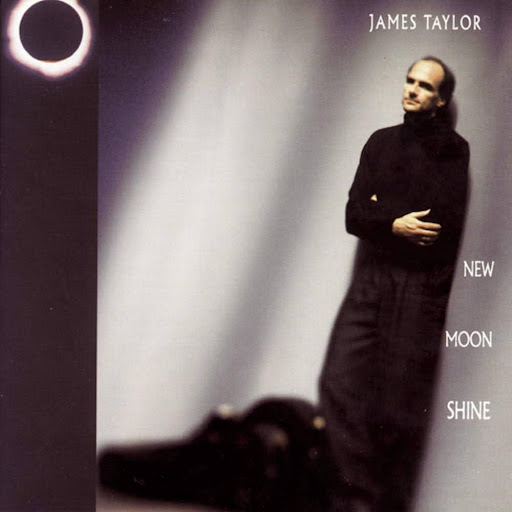 I then tried one of my favourite recordings that should sound great but never seemed to get there in my system. Maybe it is digital glare or some frequencies that sound harsh. But this time with Loki Max equalization, James Taylor’s Copperline from New Moon Shine (Columbia 1991) was just jaw dropping. My envy for that $150,000 system in Boston just floated away!
I then tried one of my favourite recordings that should sound great but never seemed to get there in my system. Maybe it is digital glare or some frequencies that sound harsh. But this time with Loki Max equalization, James Taylor’s Copperline from New Moon Shine (Columbia 1991) was just jaw dropping. My envy for that $150,000 system in Boston just floated away!
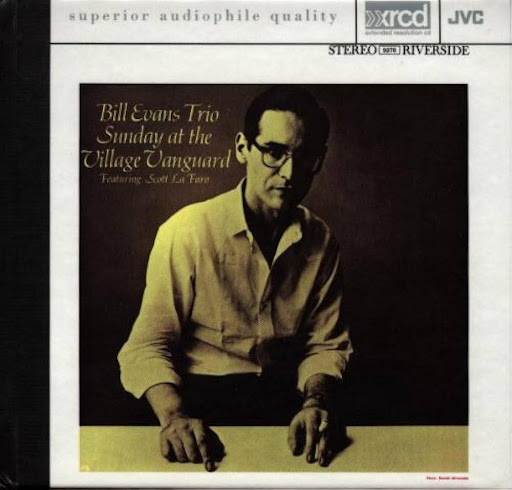 What about bass and low end? I have always found two particular albums to be bass heavy. My JVC XRCD of Bill Evans Trio’s Sunday At The Village Vanguard seems to have the bass and drums bleed in the mix too much, unlike on other CD masterings. On the 2014 Polydor SACD of Layla & Other Assorted Love Songs by Derek & The Dominos, Carl Radle’s bass and Jim Gordon’s drums and percussion I find too far forward in the mix compared to other versions.
What about bass and low end? I have always found two particular albums to be bass heavy. My JVC XRCD of Bill Evans Trio’s Sunday At The Village Vanguard seems to have the bass and drums bleed in the mix too much, unlike on other CD masterings. On the 2014 Polydor SACD of Layla & Other Assorted Love Songs by Derek & The Dominos, Carl Radle’s bass and Jim Gordon’s drums and percussion I find too far forward in the mix compared to other versions.
The cure: the Schiit Loki Max’s 20Hz control for low bass frequencies and the 120Hz control for midbass. I dialed those back with a two click cut on each, then replayed Gloria’s Step and Bell Bottom Blues again after hearing their bloated bass and drums sound. Everything was balanced in the mix this time. Now I could hear Evans and Paul Motian feeding off LaFaro without the bass bleeding out and overwhelming piano and drums on Sunday. I could also hear Gordon at the back center of the soundstage and Radle’s bass in the left channel, but blended beautifully with Clapton’s guitar, especially as Clapton and Bobby Whitlock duet during the chorus. That has to be the best I have ever heard Layla.
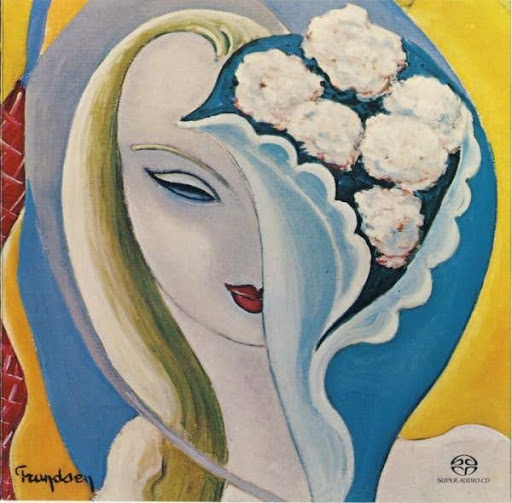 To say I am impressed is an understatement. Schiit has created a great functional tool here. As I listened to another 100 or so albums, spinning CDs and vinyl, streaming from Tidal Max, I found two presets worked best. The first one I used for vocal issues primarily, just cuts to the treble and air and a mild boost to the mids. I find that the added presence in the mids to counter the cuts to treble and air usually gets me an equalization I like. The second preset I used for recordings with bloated bass and low end.
To say I am impressed is an understatement. Schiit has created a great functional tool here. As I listened to another 100 or so albums, spinning CDs and vinyl, streaming from Tidal Max, I found two presets worked best. The first one I used for vocal issues primarily, just cuts to the treble and air and a mild boost to the mids. I find that the added presence in the mids to counter the cuts to treble and air usually gets me an equalization I like. The second preset I used for recordings with bloated bass and low end.
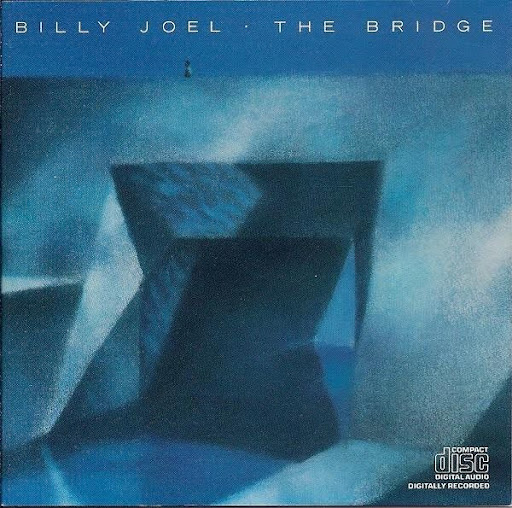 The third preset I used for more problematic recordings. Fans and enthusiasts will know some of these albums well. For example, the original US CD and LP pressings of Metallica’s And Justice For All (so dry and no bass). Perhaps the worst offender for me is Big Man On Mulberry Street by Billy Joel from The Bridge (Columbia 1986) on both CD and LP, a harsh, sibilant and resonant track. The rest of the album is not bad, a latter day all digital Phil Ramone-produced album. But for some reason, this big drum, big band track is unpleasant despite a big dynamic range. This is where the Loki Max is needed to work miracles. To get that track listenable, I had to crank down the treble and air controls to the 9 o’clock position, about half of the total cut. I also boosted the mids slightly to equal it out.
The third preset I used for more problematic recordings. Fans and enthusiasts will know some of these albums well. For example, the original US CD and LP pressings of Metallica’s And Justice For All (so dry and no bass). Perhaps the worst offender for me is Big Man On Mulberry Street by Billy Joel from The Bridge (Columbia 1986) on both CD and LP, a harsh, sibilant and resonant track. The rest of the album is not bad, a latter day all digital Phil Ramone-produced album. But for some reason, this big drum, big band track is unpleasant despite a big dynamic range. This is where the Loki Max is needed to work miracles. To get that track listenable, I had to crank down the treble and air controls to the 9 o’clock position, about half of the total cut. I also boosted the mids slightly to equal it out.
When I turn down the treble control on my Marantz preamp, the track just sounds like it is under water. Yet despite the huge cuts in the Loki Max’s 6kHz and 16kHz ranges, it actually sounded pretty good. I did this again with the LP, which sounded better than the CD with the EQ bypassed, but with the same EQ settings, it really sounded excellent. With vinyl generally, the Loki Max was required less – but it helped, especially with certain LPs.
 The best example was Some Girls by The Rolling Stones. This LP sounds great, but Mick’s vocals were cut really hot so when played loud, it can be a tad screechy. Slight EQ cuts to the upper mids and treble gave the LP a perfect balance, showcasing the Stones at their late 70s disco/funk/rock hybrid best. Beast of Burden, my favourite track, just filled the room. It was phenomenal.
The best example was Some Girls by The Rolling Stones. This LP sounds great, but Mick’s vocals were cut really hot so when played loud, it can be a tad screechy. Slight EQ cuts to the upper mids and treble gave the LP a perfect balance, showcasing the Stones at their late 70s disco/funk/rock hybrid best. Beast of Burden, my favourite track, just filled the room. It was phenomenal.
Finally, I tried to find an ideal setting that would work for a lot of digital recordings, one that I could leave as the first preset that would work for most albums. My system seemed to benefit from small boosts of the lower mids and the ‘presence’/upper mids (1 step), very small or no cuts to the lower and midbass, a medium cut to the treble (2-3 steps) and a larger cut to the air and high resonant frequencies (4-5 steps).
 Vocals and instrumentals all sounded good with these settings. This is sort of a very mild inverse of the ‘Smiley Face’ EQ with its boosted lows and highs and cuts to the mids. I guess I like a slightly concave downward EQ line if this were a graphic equalizer (the kids call it a frownie. -Ed). This makes sense since my room sounds like it is a little bright and I crave warmth in recordings. So a decreased high frequency air and treble, slightly boosted mids, and powerful but not overwhelming bass would be my ideal. When I hauled out my old Panasonic mini system and looked at the EQ curve on the digital display for the SOFT EQ preset, sure enough, it was quite similar to the Loki Max settings I like.
Vocals and instrumentals all sounded good with these settings. This is sort of a very mild inverse of the ‘Smiley Face’ EQ with its boosted lows and highs and cuts to the mids. I guess I like a slightly concave downward EQ line if this were a graphic equalizer (the kids call it a frownie. -Ed). This makes sense since my room sounds like it is a little bright and I crave warmth in recordings. So a decreased high frequency air and treble, slightly boosted mids, and powerful but not overwhelming bass would be my ideal. When I hauled out my old Panasonic mini system and looked at the EQ curve on the digital display for the SOFT EQ preset, sure enough, it was quite similar to the Loki Max settings I like.
Obviously, no two systems are the same and you will have to experiment to find out what is best for you. Some who use equalization will use it to refine the low end, others to try to get the mids right, and/or some like me want to get vocals and treble and highs just right, and still others may realize their system has no need for EQ and it takes away from their listening.
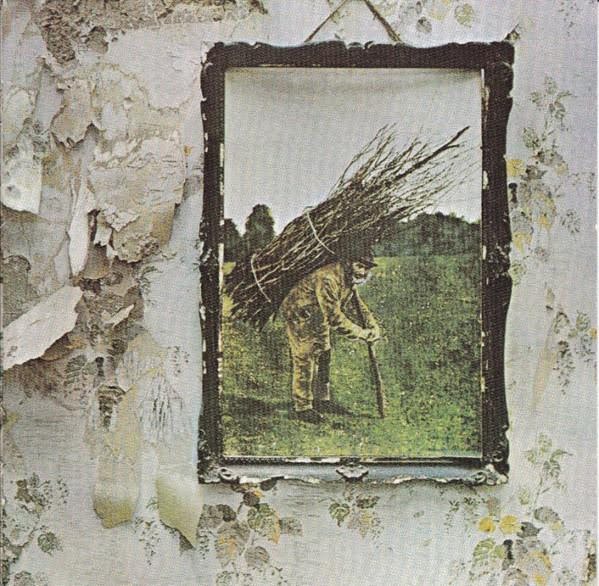 With the Loki Max in place, I felt like my Soliloquy 5.3 speakers were completely dialed in. To get an impartial opinion, I brought over some friends who have heard my system before to listen again. Test tracks: Gloria’s Step from the XRCD of Sunday At The Village Vanguard, and Led Zeppelin’s Stairway To Heaven from the original US Led Zeppelin IV Barry Diament-mastered CD. Some of the comments were, “Like I’m in the room with the Bill Evans Trio!” and “That’s the best I have ever heard Stairway, I mean, ever!” It’s always nice to share the experience. I didn’t even play my original US IV pressing or my OJC/Craft Kevin Gray Sunday LP for them.
With the Loki Max in place, I felt like my Soliloquy 5.3 speakers were completely dialed in. To get an impartial opinion, I brought over some friends who have heard my system before to listen again. Test tracks: Gloria’s Step from the XRCD of Sunday At The Village Vanguard, and Led Zeppelin’s Stairway To Heaven from the original US Led Zeppelin IV Barry Diament-mastered CD. Some of the comments were, “Like I’m in the room with the Bill Evans Trio!” and “That’s the best I have ever heard Stairway, I mean, ever!” It’s always nice to share the experience. I didn’t even play my original US IV pressing or my OJC/Craft Kevin Gray Sunday LP for them.
Conclusions
The Schiit Loki Max is not intended to do ‘room correction’, nor is it a replacement for DSP. It is designed to help fix the sound of recordings in your listening space. But I also found it incredibly useful to find out what frequencies cause issues in my room. My advice is that if you feel your system is not giving you as satisfying a listening experience as you think it is capable of, and you have tried other things out like room treatments, cable and interconnect swapping, foundation and stabilization equipment, cartridge swapping, tube rolling etc., then maybe it is time for equalization. But even if you are starting out building a listening space, chances are you might want or need some sort of equalization. At $1,499 U.S., the Loki Max is not inexpensive but I found it to be worth every penny. If you want to try out Schiit equalization products, you could start with the Loki Max+ or the Lokius and see if you like it.
In my opinion, with the Schiit Loki Max in the audio chain of my system, this is the closest I have come to ‘perfect sound’, that elusive utopia of detail and realism, of warmth and musicality, that I’ve been trying for years to achieve. For that level of improvement, I think the Schiit Loki Max is a miracle worker and I award it the Wall of Sound Gold Star Award.
Schiit Loki Max
$1499 USD as of Sept.2024
Specifications and more: https://www.schiit.com/products/loki-max

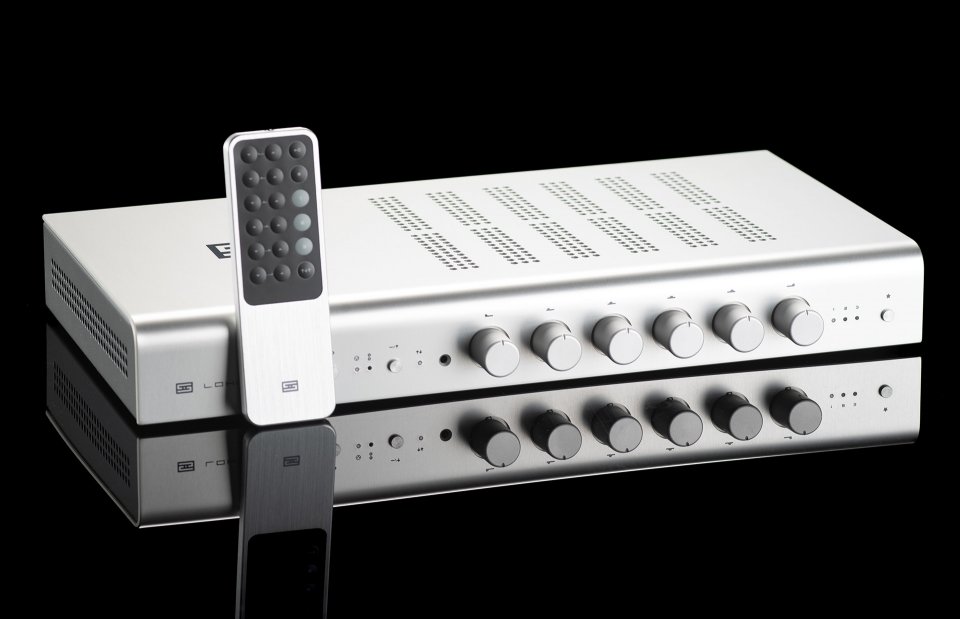




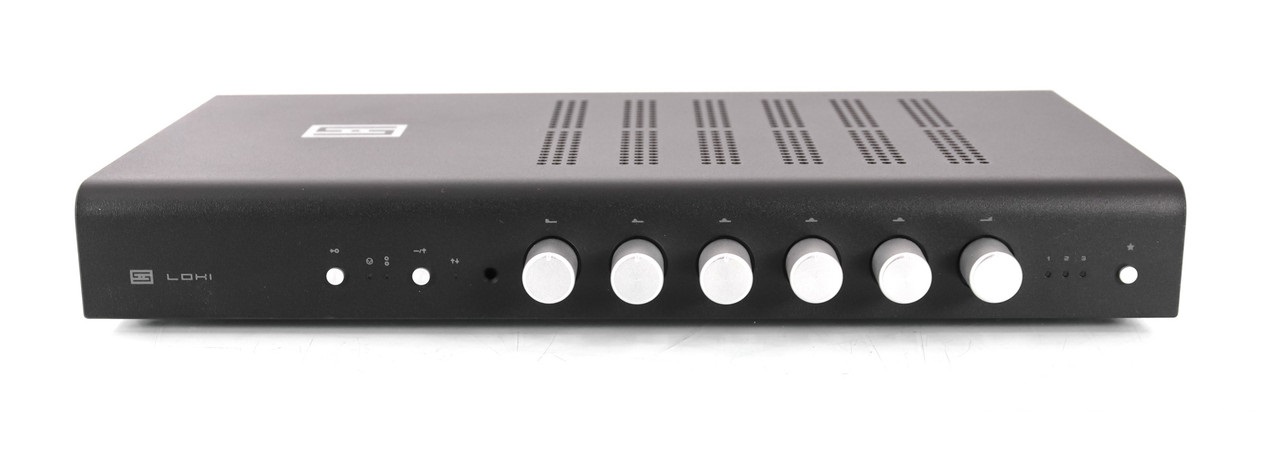
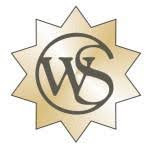
I’ve used a Loki Max since it was introduced and I considered it an indispensable component in my system for all the reasons you mentioned in your excellent review. I’ve a couple of observations to add though. One is all these positives you mentioned are moot if transparency is compromised. The Loki Max is as transparent as a component can get. Any compromise introduced is on the level of adding another set of interconnects to your system. I’ve also discovered a second useful way to adjust the sound using the Loki Max. It has two inputs and two outputs (one balanced and one single ended) that are active at all times. I place the Loki before my preamp as recommended in the manual. I use the Loki inputs to switch between my phono stage and my DAC. I feed the two sets of outputs with interconnects with different sonic signatures to my preamp. I can switch between the two with the preamp. This can be done with or without the equalizer circuit switched in, of course. Just another slick way to affect to overall sound with the click of a button.
Well, the equalizer is $1499, but the cords to hook it up in my system would be $9000.